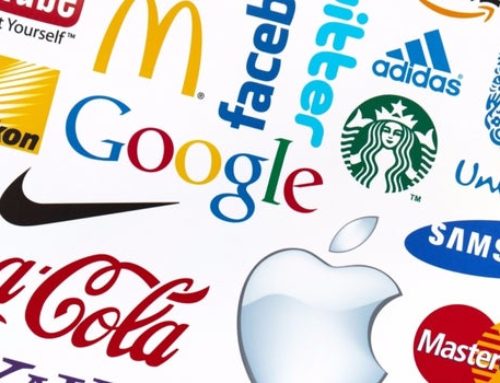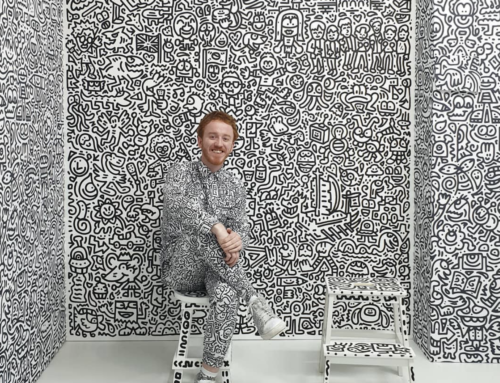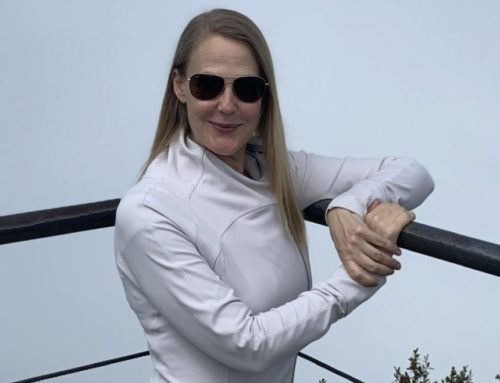Ready are you? What know you of ready?
-Yoda
New Rules Require New Brand Characteristics
We live in an interconnected world of change where new ecosystem rules are starting to govern. This is a world where someone else’s “cause” is likely to create an “effect” on your business. Control is out of your hands and you are challenged to continually respond. How do you compete more effectively in a world overtaken by rapid change; where each day companies must confront the possibility of the obsolescence of their products, brands and the very industries in which they operate? In this turbulent world of abundant choice, commoditization of goods and services and continual innovation that gets quickly commodified, buyers are increasingly making decisions instantly and effortlessly with a click. Brands need to adapt to this world by forging an even stronger human and cultural connection.
Innovation and Algorithmic Selling Alone Won’t Meet the Growth Challenge
Today, companies must do more than innovate to grow, because new dynamics are at work in a world where people feel under siege from unexpected directions – and feel beleaguered. Companies must step back and think about how to better invest in strengthening the human side of their business. Marketing, which has tragically fallen into a narrow ROI focus, can be a powerful driver. However, corporations are still looking to eliminate the inefficiencies of marketing that have sapped the bottom-line and under supported future growth in the past. They seek to decrease hard marketing costs and increase investments across transactional digital channels that don’t build brand or relationship equity. Without building brand equity, this marketing veers toward commoditization. Human beings are unique living beings with personal choice, and choice has a high emotional, often irrational, element to it. If your product wants to win that choice, your brand needs to make a difference to the buyer.
Bold Brands Will Survive and Thrive
Unless you have billions to spend on marketing e.g. Apple, Geico, the new world demands that your brand sharply differentiate on relevancy. If your brand is to matter, it must radically “stand out” in its category and in the world by demonstrating it makes a difference. Make sure your brand is strong enough to command attention, penetrate indifference and make people think and feel something. Brands such as Yeti, Patagonia, John Deere, Chanel, Red Bull, Subaru, and Walmart add to lives and the culture and make a meaningful connection. Otherwise, your brand is just wallpaper adding to the tons of meaningless brand wallpaper cluttering up the world.
Creating a powerful brand is, ironically, a challenge for many companies as decisionmakers typically favor safe, vanilla brands. Many senior executives are not comfortable with “branding” (lacking experience and deep knowledge) and don’t have a relationship with a branding professional they can trust, so they are wary and cautious. Branding is also an emotional process for a company, because it directly affects all aspects of the human side of business. It evokes lots of discussion (which is good!) and emotions tend to run high. Sometimes, decisionmakers make a brand decision to placate internal concerns, rather than lead internal minds to a new place. Third, risk averse decisionmakers often punt to research. If the research says the brand is good, then they approve. The problem is that bold ideas don’t test as well in research as familiar ideas, as research tends to favor the familiar and mediocre. Future-forward art, poetry and brands pave new roads with a profound interpretation of something, and this requires strategic insight rather than popularity to assess. Decisionmakers are often not sufficiently engaged in the mechanics of how a brand will work, hence they make uninformed choices.
Recognizing the barriers, companies can build a bold brand as long as they are committed to doing so. This includes stepping back and exploring the business from multiple perspectives, changing the way the company engages the marketplace and re-shaping how the world sees the company. All of this needs to be done with the driving purpose of strengthening the company’s resiliency in a changing, uncertain world.
Design Your Brand to be Resilient
Since brands are context sensitive, how can a brand hold value in a changing world? It must be designed to be adaptive and responsive. This intellectual property, like a brilliant song that can have a thousand interpretations yet remain the same, must be flexible. A strong brand strategy has multiple interlocking pieces. It is a puzzle with many levels and is always rooted in what matters most to people. Think about your consumer/investor/brand audience and what is truly important to them as people – today and tomorrow. Think hard about what may change as many of the fundamentals of life are changing e.g. gender identity, remote work careers. Don’t assume people want/feel the same in the future as they did in the past. Map out the various assumptions and hypotheses to define risk parameters. Know what your brand can hang onto – needs to hang onto – know what it needs to let go of as things transform.
As you embark on thinking about how to make your brand adaptive and flexible, give yourself time and ask people with diverse perspectives to join you in exploring possibilities. Think about the following three as you get started.
Vision, Feel, Imagine: Light up imaginations. Lean into the future and feel the lives of the people you want to affect. Imagine a perfect union between their dreams and your company. Draw what this looks like. Yes, draw it.
Build Breadth into Your Core Brand Idea: Instead of defining a narrow position that prescribes a rigid path, think more about a defining direction tethered to a North Star destination (where you want to end up with perceptions). This allows you to change the path in response to the environment as you still head to the destination. For instance, the Chanel brand owns feminine beauty. Over the years, it has introduced latitude into the idea of feminine beauty. Beauty is always in the eye of the beholder. It isn’t defined only by Catherine Deneuve. Chanel recognizes that you are the beholder, and they are the provider. In that role, they are sensitive to changing ideas about beauty. In 2013, Chanel added rebel actress and nonconformist Kristen Stewart as a Chanel model which strengthened delivery of feminine beauty in a modern way. How narrow is your brand idea? How can you broaden it to align with shifting needs/wants?
Hold onto Your Equity! When you own something powerful, don’t throw it away for something shiny and new. This is a common mistake. In 2019, Weight Watchers threw away 50 years of hard-earned dominance in weight loss. It changed its name to WW and replaced weight loss with “wellness” as the core brand essence. This was a radical, and I think unwarranted, level of change and has been a disaster. Sales are down, the stock price is falling, and consumers are confused. The company is rumored to be re-considering its expensive re-branding fiasco. If they wanted to connect to wellness, they could have integrated that idea into a new concept of weight loss. Never throw away or trample on your big equity. Just carefully move it into the future. Know what is valuable and keep it. Disney – childlike enchantment. Gillette – American macho masculinity. Apple – radical creativity. In building brand resiliency, you’ll need that big idea and make sure it has a broad wingspan.
FACT FOR THOUGHT
Tardigrades are the most resilient species on our planet. Sometimes called water bears or moss piglets, tardigrades can survive up to 30 years without food or water, live at temperatures as low as -450 degrees Fahrenheit, or as high as 302 degrees. The only forces capable of harming tardigrades are a gigantic asteroid, an exploding star or a deadly gamma ray burst which will not happen before our own Sun dies.
The Telegraph
Photo Credit: From the Grapevine
Enjoying Overhead Space? There’s More to Love.
Subscribe to Overhead Space to receive mind-expanding content that helps you connect the dots in new ways.




